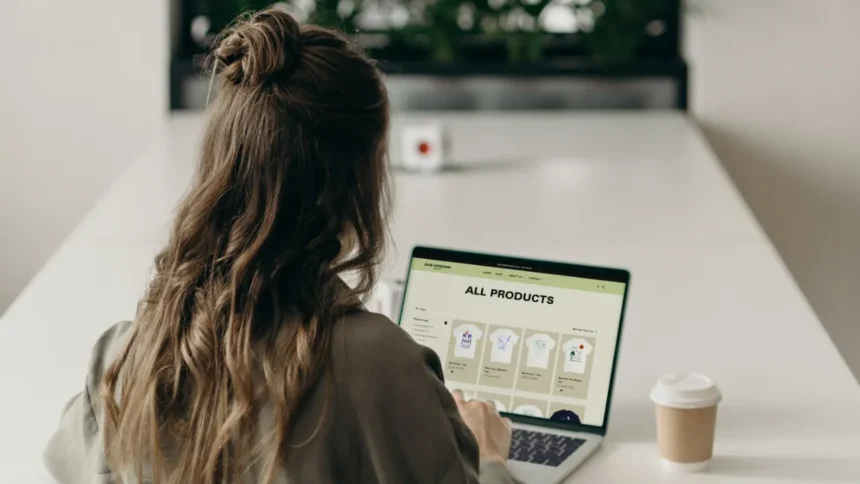Have you ever browsed an online store, gotten excited about a product, then read the description… and instantly lost interest? You’re not alone.
A product description is more than just a few lines explaining what an item is. It’s your silent salesperson, your brand ambassador, and—if done right—your conversion powerhouse.
In this post, we’ll break down how to write good product descriptions that not only inform but persuade, inspire, and sell.
Why Product Descriptions Matter
Before we dive into the how-to, let’s talk about the “why.”
A great product description does three things:
- Informs – It explains what the product is and what it does.
- Engages – It connects with the reader on an emotional level.
- Converts – It motivates the customer to click “Add to Cart.”
If your descriptions are vague, generic, or just copy-pasted from the manufacturer, you’re leaving money on the table.
1. Know Your Audience
The first rule of good copywriting is to understand who you’re talking to. Ask yourself:
- Who is buying this product?
- What problem are they trying to solve?
- What kind of language do they use?
For example, if you’re selling a luxury skincare serum, your audience probably values elegance, ingredients, and long-term results. But if you’re selling a tactical flashlight, they care about durability, brightness, and battery life.
Write with your ideal customer in mind—always.
2. Focus on Benefits, Not Just Features
Features describe what a product has. Benefits explain what a product does for the customer.
Here’s the difference:
- Feature: “Made from stainless steel.”
- Benefit: “Built to last a lifetime—no rust, no wear, just reliable performance.”
Customers want to know what’s in it for them. So instead of just listing technical specs, tie each feature to a real-life benefit.
3. Use Natural, Descriptive Language
Avoid dry, robotic language. Good product descriptions should read like a friendly recommendation, not an instruction manual.
Instead of:
“This sweater is 100% cotton and comes in three colors.”
Try:
“Wrap yourself in cozy comfort with this 100% cotton sweater—soft, breathable, and available in three timeless shades to match every mood.”
Use vivid adjectives (sparingly), action verbs, and sensory words that help customers imagine owning and using the product.
4. Keep It Scannable
People don’t read every word online. They scan.
Break up your text with:
- Short paragraphs
- Bullet points
- Bolded phrases
- Subheadings
For example:
What You’ll Love:
- Soft, sustainable bamboo fabric
- Moisture-wicking and breathable
- Flattering relaxed fit for all body types
- Available in five neutral shades
This format is not only easy on the eyes—it also helps customers find key info fast.
5. Tell a Micro-Story
Great product descriptions often tell a tiny story that connects emotionally. It doesn’t have to be long or dramatic.
Example:
“Designed for early mornings and late-night Netflix binges, this mug is the perfect companion for your daily rituals.”
A small story paints a picture, creates context, and humanizes the item. Suddenly, it’s not just a mug—it’s your mug.
6. Use SEO Wisely (But Don’t Overdo It)
If you want your product to show up in search results, you need to include relevant keywords. But here’s the key: write for humans first, search engines second.
Toss in keywords naturally—don’t stuff them.
Bad example:
“Men’s leather wallet with leather stitching and leather strap in a leather case.”
Better example:
“This sleek men’s leather wallet features hand-stitched detailing and a slim design that fits neatly in your pocket.”
Search engines will pick up the keyword, but the description still sounds smooth and readable.
7. Include All the Important Details
Your product description should answer every question a customer might have:
- What’s it made of?
- What size is it?
- How do you use it?
- Is there a warranty?
- What’s included in the box?
The more transparent and helpful you are, the more trust you build—and the fewer returns or bad reviews you’ll get.
8. Match Your Brand Voice
Are you playful and quirky? Or elegant and refined? Your product descriptions should sound like you.
Compare these:
Casual brand: “Say goodbye to boring breakfasts—this pan flips your pancakes like a pro (and looks cool doing it).”
Luxury brand: “Crafted for culinary elegance, this non-stick pan ensures flawless flips every time.”
Both are effective, but only if they align with the overall tone of the brand.
Consistency builds recognition and customer trust.
9. Use Social Proof
If you have reviews or ratings, use them in your descriptions.
“Our customers say it’s the best hair dryer they’ve ever owned—lightweight, quiet, and fast!”
Mention awards, press features, or how many units you’ve sold. People trust other people more than they trust marketing.
10. End with a Call to Action
Don’t leave your reader hanging. Encourage them to take the next step.
Examples:
- “Order now and experience the difference.”
- “Try it risk-free for 30 days.”
- “Add to your cart and upgrade your routine today.”
Even a simple “Shop now” button can make a difference.
Bonus Tip: Test and Optimize
Don’t guess what works—test it.
Use A/B testing on headlines, bullet points, or even CTA buttons to see what converts better. Sometimes a single word change can increase sales dramatically.
Final Thoughts
Writing great product descriptions isn’t just about listing facts. It’s about telling a story, solving a problem, and helping customers imagine a better version of their life with your product in it.
So next time you’re updating your product listings, remember: write with clarity, emotion, and purpose.
Your conversions will thank you.


